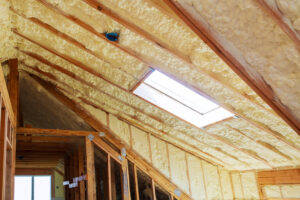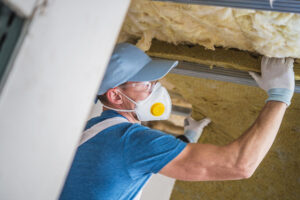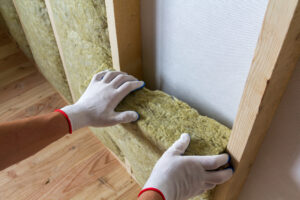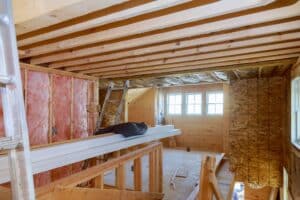High energy bills during hot months can strain our budgets, but there are effective strategies to lower AC costs without sacrificing comfort. By making small changes to how we use our cooling systems, we can cut energy consumption by up to 3% for each degree we raise the temperature setting.
From simple fixes like sealing drafts with expanding foam and caulk to establishing cross-ventilation by opening windows strategically, there are many options to stay cool more efficiently. Using ceiling fans to circulate air can make rooms feel cooler without running the AC as much, and proper maintenance of cooling systems ensures they run at peak efficiency.
Understanding Your AC System
Before making changes to reduce your AC usage, it helps to know how your system works. Understanding key aspects like basic operations, efficiency ratings, and what affects your home’s cooling needs can lead to smarter decisions.
HVAC Basics
HVAC stands for Heating, Ventilation, and Air Conditioning, and your AC is part of this larger system that controls your home’s climate. Most residential air conditioners work by removing heat from inside your home and transferring it outside.
The main components include:
- Evaporator coil: Absorbs heat from indoor air
- Compressor: Pressurizes refrigerant and moves it through the system
- Condenser coil: Releases heat outside
- Expansion valve: Controls refrigerant flow
- Thermostat: Monitors temperature and signals the system
Regular maintenance is crucial for these components. Dirty filters, low refrigerant, or worn parts can make your system work harder and use more electricity.
Energy Star Ratings
Energy Star is a government-backed program that helps identify energy-efficient products. AC units with Energy Star certification typically use 8-10% less energy than standard models.
The efficiency of air conditioners is measured by:
- SEER rating (Seasonal Energy Efficiency Ratio): Higher numbers mean better efficiency, with most modern units ranging from 13-21.
- EER rating (Energy Efficiency Ratio): Measures efficiency at peak conditions.
While higher-rated units might cost more upfront, they can save significant money over time. For example, upgrading from a SEER 9 to a SEER 16 unit could reduce cooling costs by up to 45%.
Heating and Cooling Load
Your home’s heating and cooling load refers to the amount of energy needed to maintain comfortable temperatures, and several factors affect this load:
- Home size and layout
- Quality of insulation
- Number and type of windows
- Air leakage points
- Local climate
- Number of occupants
A properly sized AC should match your home’s cooling load, as an oversized unit will cycle on and off frequently, wasting energy and creating temperature fluctuations. An undersized unit will run continuously without adequately cooling your space. Get a professional load calculation (called Manual J) before installing a new system, as this ensures you get the right-sized unit for your specific needs.
Improving Home Efficiency
A well-insulated and sealed home reduces AC needs by maintaining cooler temperatures naturally. These improvements create a barrier against heat while allowing proper airflow, significantly cutting energy costs.
Enhancing Insulation
Adding insulation to your attic and walls can dramatically improve AC efficiency and reduce cooling costs by up to 20%. Check your current insulation levels first, as many older homes have insufficient insulation by today’s standards. The Department of Energy recommends R-30 to R-60 for most attics, depending on your climate zone.
Consider these insulation options:
- Fiberglass batts: Budget-friendly and DIY-friendly
- Blown-in cellulose: Great for filling odd spaces and retrofitting
- Spray foam: Provides excellent sealing and high R-value
Sealing Leaks and Improving Ventilation
Air leaks force your AC to work harder, and you can find these gaps around windows, doors, electrical outlets, and where utilities enter the home. Use caulk for small, stationary gaps and weatherstripping for movable components like doors. A simple door sweep can prevent cool air from escaping under exterior doors.
Proper ventilation is equally important, so consider these ventilation improvements:
- Install ceiling fans to circulate cool air
- Use bathroom and kitchen exhaust fans to remove humidity
- Add whole-house fans to pull in cool evening air
Window Treatments and Shading
Windows can account for 25-30% of your home’s heat gain, and strategic window treatments significantly reduce this heat transfer.
Consider your window orientation. South and west-facing windows receive the most intense sunlight, so prioritize these for external shade like trees or awnings. Indoor treatments work well too. Cellular shades trap air between layers, creating additional insulation. Reflective blinds bounce heat away before it enters your living space.
Effective window solutions include:
- Thermal curtains or blinds that block heat
- Reflective window film that rejects up to 70% of solar heat
- Exterior awnings that can reduce heat gain by up to 77%
AC Usage Optimization
Optimizing your air conditioning system can lead to significant energy savings while maintaining comfort. The right combination of technology, maintenance, and daily habits can reduce your electricity bills by 10-30%.
Smart Thermostat Use
Smart thermostats allow you to program temperature settings based on your schedule, ensuring the AC isn’t cooling an empty home. Many models can learn your preferences over time and make automatic adjustments. Set your thermostat to 78°F (26°C) when you’re home and 82°F (28°C) when away. Each degree below 78°F increases energy consumption by approximately 3-5%.
Smart thermostats also offer remote control via smartphone apps. This feature lets you adjust settings from anywhere, perfect for unexpected schedule changes. Some models can even detect when you’re approaching home and adjust temperatures accordingly.
Many utility companies offer rebates for smart thermostat installation, making them even more cost-effective.
Maintenance and Air Filters
Dirty air filters restrict airflow, forcing your system to work harder and consume more energy. Replace filters every 1-3 months depending on usage and environmental factors like pets or dust levels. This simple task can improve efficiency by up to 15%. Don’t forget to inspect ductwork for leaks, too. Sealed ducts prevent cooled air from escaping into unoccupied spaces like attics or crawlspaces.
Check outdoor units for debris and vegetation growth. Plants should be at least 2-3 feet away from your unit to ensure proper airflow. Also, clean condenser coils annually to remove dirt buildup that insulates the coils and reduces heat transfer efficiency.
For maximum protection, book professional servicing at least once a year, preferably before summer begins.
Optimizing Daily Use and Habits
- Use ceiling fans to create a wind-chill effect, allowing you to raise the thermostat setting by 4°F without sacrificing comfort.
- Close blinds and curtains during the hottest parts of the day to block solar heat gain. This simple step can reduce indoor temperatures by 5-10°F.
- Minimize heat-generating activities during peak temperature hours. E.G. cooking with microwaves or outdoor grills instead of ovens and running dishwashers and dryers during cooler evening hours.
- Consider using the “dry” or ‘dehumidify’ setting on your AC during humid days rather than full cooling mode. This draws moisture from the air while using less energy.
- Avoid constantly adjusting the thermostat, as frequent changes force your system to work harder. Instead, find a comfortable setting and maintain it consistently.
Financial Incentives and Environmental Impact
Making your AC more energy efficient not only saves you money but also helps the environment. Many programs exist to reward homeowners for making eco-friendly choices.
Rebates and Tax Credits
Government agencies and utility companies offer substantial financial incentives for upgrading to energy-efficient air conditioning systems. Federal tax credits can cover up to 30% of the cost when installing high-efficiency AC units.
Many local utilities also provide rebates ranging from $100-$500 for HVAC upgrades or routine maintenance that improves energy efficiency. Some states have additional programs that stack with federal incentives. Ask your HVAC contractor about available incentives or check your utility company’s website. Additionally, energy audits, often offered for free, can identify efficiency opportunities in your home.
Reducing Your Carbon Footprint
Air conditioners consume significant electricity, which contributes to greenhouse gas emissions, making your AC more efficient can reduce this environmental impact considerably. High-efficiency systems use up to 50% less energy than older models, directly lowering your carbon footprint. Proper maintenance and smart usage further reduce environmental impact. Get in touch to arrange an energy audit of your home to reduce your monthly bills.





